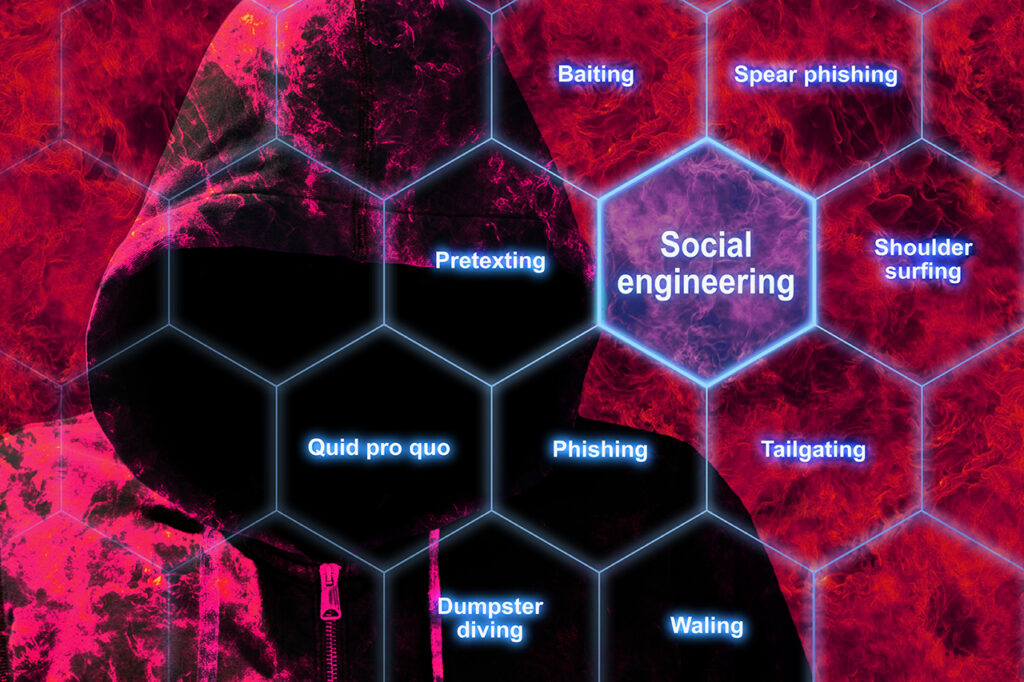Social engineering is a tactic used by cybercriminals to manipulate individuals into revealing confidential information, taking certain actions, or compromising their security in some way. It involves the use of psychological techniques to trick people into providing access or information that can be used for malicious purposes.
Here are some of the most common tactics used in social engineering:
- Phishing: Phishing is a type of social engineering that involves sending fake emails or messages to trick people into revealing sensitive information, such as passwords or credit card numbers. These messages often look like they are coming from a legitimate source, such as a bank or a company.
- Pretexting: Pretexting is a type of social engineering that involves creating a false pretext or scenario to gain access to sensitive information. For example, an attacker might pose as a customer service representative and ask for a password or other personal information.
- Baiting: Baiting is a type of social engineering that involves offering something of value to entice someone to take an action that will compromise their security. For example, an attacker might leave a USB drive labeled “confidential” in a public place, hoping that someone will pick it up and plug it into their computer, infecting it with malware.
- Spear phishing: Spear phishing is a targeted form of phishing that involves researching a specific individual or group and tailoring the phishing message to their interests or needs. This can make the message more convincing and increase the chances of success.
- Impersonation: Impersonation is a type of social engineering that involves pretending to be someone else in order to gain access to sensitive information or resources. This can involve creating fake social media accounts, using fake email addresses, or even physically impersonating someone.
- Scareware: Scareware is a type of social engineering that involves using scare tactics to trick people into downloading malicious software. For example, an attacker might create a pop-up message that claims the user’s computer has a virus and urges them to download an antivirus program that is actually malware.
- Tailgating: Tailgating is a type of social engineering that involves following someone into a secure area without proper authorization. This can involve physically following someone through a door or gate, or using social engineering tactics to convince someone to let them in.
These are just a few of the most common tactics used in social engineering. It is important to be aware of these tactics and to take steps to protect yourself, such as being cautious about clicking on links or downloading attachments, using strong passwords, and being skeptical of unsolicited requests for information. By being vigilant and staying informed, you can reduce your risk of falling victim to social engineering attacks.
